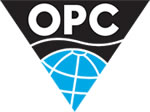Glossary
Packer |
a mechanical device containing a rubber packing element which can be expanded against the wellbore or casing to isolate the annular sections. Used in DSTs and squeeze cementing. |
Palaeozoic |
era: the era of geological time (comprising Cambrian, Ordovician, Silurian, Devonian, Carboniferous and Permian Periods) which began approx 600million years ago and ended approx 230 million years ago. |
Paraffins |
the simplest homologous series of hydrocarbons, containing no unsaturated carbon-to-carbon bonds; also known as the alkanes. |
Payzone |
a productive horizon in a formation that is sufficiently thick and contains a high enough concentration of oil and/or gas to make production from it commercially viable. |
Peak shaving |
increasing the normal supply of gas from another source during emergency or peak periods. |
Pentane |
the saturated hydrocarbon (alkane) with five carbon atoms in its molecule (C5H12), the fifth member of the paraffin series - a liquid under normal conditions. |
Perforating gun |
see gun-perforator. |
Permeability |
a measure of the capacity of a rock to allow water or other fluids such as oil to pass through it. Dependent on the connectivity of the pore spaces. |
Permian Period |
the period of geological time which began approx 280 million years ago and ended approx 230 million years ago; the period in which the gas-bearing Rotliegendes sandstone formations were laid down in the southern North Sea. |
Petrochemical |
a chemical derived from petroleum or natural gas (e.g. benzene, ethylene). |
Petroleum |
a generic name for hydrocarbons, including crude oil, natural gas liquids, natural gas and their products. The name is derived from the Latin oil, oleum, which occurs naturally in rocks, petra. |
Petroleum engineer |
the engineer who is responsible for the overall strategy of oil and gas drilling and production operations for a particular field. |
Petroleum Revenue Tax (PRT) |
a tax levied by the UK Government on net income from petroleum production in the UK sector after deducting all costs, Royalties and certain other allowances; this tax is deductible in computing Corporation Tax. |
Pig |
a piece of equipment that is inserted into a pipeline and is carried along by the flow of oil or gas; used to clean or monitor the internal condition of the pipeline or to mark an interface between two different products |
Piling |
steel piles driven into the seabed to anchor fixed steel structures such as production and drilling platforms |
Pinch-out trap |
a trap where a bed or reservoir rock gets progressively thinner as it nears an impervious area and eventually disappears. |
Pipeline |
a tube for the transportation of crude oil or natural gas between two points, either onshore or offshore. |
Pipeline capacity |
the amount of oil or gas required to keep a pipeline full, or the amount that can be passed through a pipeline in a given period of time |
Pit |
an unroofed sump or tank for holding liquids such as drilling muds |
Plateau level |
the level of peak production reached by an oil or gas field; it is always followed by declining levels of production. |
Platform |
a fixed or floating offshore structure from which wells are drilled; see drilling platform, production platform. |
Plugged and abandoned (p & a’d) |
the process whereby a well that is no longer needed (usually because it was dry) is filled with concrete and abandoned. |
Pore pressure |
the natural internal pressure in a formation |
Porosity |
a measure of the amount of free space, or voids, in a rock; generally expressed as a percentage of the total volume. |
Possible reserves |
undeveloped oil and/or gas reserves which best judgement indicates might eventually be recoverable from undrilled or untested structures |
Pour point |
the temperature at which a liquid hydrocarbon ceases to flow, or at which it congeals; it is a function of the viscosities and melting points of the various hydrocarbons. |
PPM |
parts per million. |
Primary recovery |
recovery of oil or gas from a reservoir purely by using the natural pressure in the reservoir to force the oil or gas out. |
Probable reserves |
undeveloped oil and/or gas reserves considered to be recoverable from penetrated formations but lacking information to be classified as proven reserves. |
Produced water |
water naturally present in the reservoir or injected into the reservoir to enhance production, produced as a co-product when oil is produced. |
Producing horizon |
rock from which oil or gas is produced. |
Production drilling |
wells drilled in order to bring a field into production. |
Production licence |
a licence to produce oil or gas in a particular area issued to a company by the governing state. |
Production phase |
the phase of the life of a field in which oil or gas is produced. |
Production platform |
a platform from which development wells are drilled and which carries all the associated processing plant and other equipment needed to maintain a field in production. |
Production tubing |
the pipe in a production well through which oil or gas flows from the reservoir to the surface; also known as the production string |
Production well |
well used to remove oil or gas from a reservoir. |
Project finance |
a method of financing in which the lender has a claim to receive loan payments only out of the revenues earned by the project he helped finance. In this type of finance, the lender has no recourse to the borrower’s other assets. |
Propane |
the saturated hydrocarbon (alkane) with three carbon atoms in its molecule (C3H8); the third member of the paraffin series - a gas under normal conditions |
Propene (propylene) |
the member of the alkene series containing three carbon atoms, two of which are connected by a double (unsaturated) bond (C3H6); an important raw material in the chemical and plastics industry. |
Proven field |
an oil and/or gas field whose physical extent and estimated reserves have been proven. |
Proven reserves |
the estimated quantities of hydrocarbons that geological and engineering data demonstrate with reasonable certainty to be recoverable in future years from known oil and gas reservoirs under existing economic and operating conditions. |










